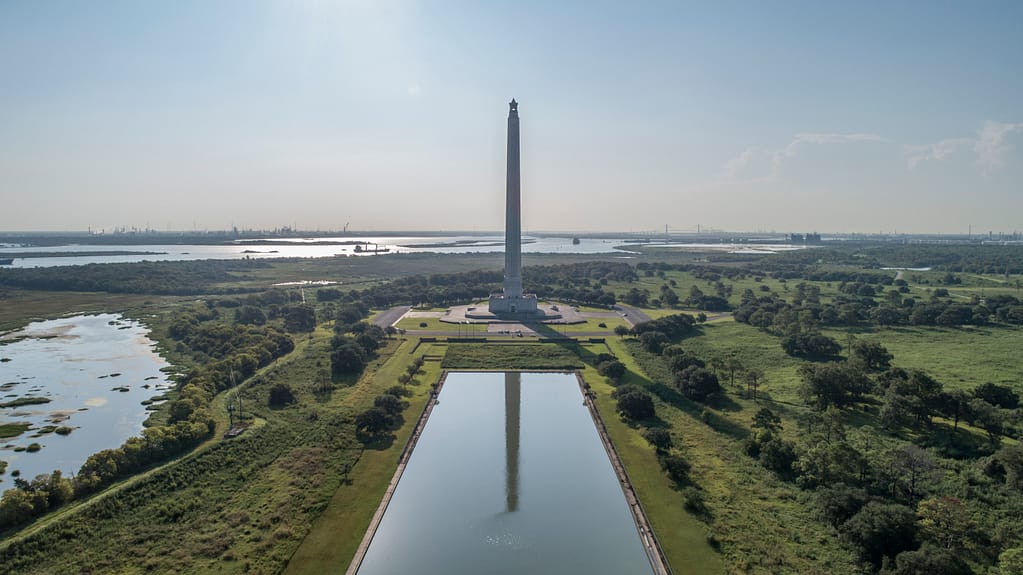The Texas Independence Trail offers a journey through history, highlighting the pivotal moments that led to Texas gaining independence from Mexico. Stretching across Southeast Texas, this trail provides a rich blend of historical landmarks, scenic landscapes, and cultural sites. Houston and its surrounding areas play a key role in this story, making the region a must-visit for history enthusiasts.
The San Jacinto Battleground: Where Freedom Was Won
The San Jacinto Battleground, located just outside of Houston, marks the site of the final battle of the Texas Revolution. On April 21, 1836, General Sam Houston led Texian forces to victory over the Mexican army, securing Texas’s independence.

The San Jacinto Monument, standing at 567 feet, commemorates this decisive victory. Visitors can explore the monument’s observation deck, offering panoramic views of the Houston Ship Channel and surrounding areas. The San Jacinto Museum provides a deeper look into the events leading to the battle and the people who fought for freedom.
Washington-on-the-Brazos: The Birthplace of Texas
Located about an hour northwest of Houston, Washington-on-the-Brazos is known as the “birthplace of Texas.” It was here, in 1836, that delegates signed the Texas Declaration of Independence, officially severing ties with Mexico.

Today, visitors can explore the Star of the Republic Museum and the reconstructed Independence Hall, gaining insight into the early struggles and aspirations of the Texian settlers. The park also offers scenic hiking trails and picnic areas, making it a perfect blend of history and nature.
The Alamo Connection and Road to San Jacinto
While the Alamo in San Antonio is over three hours away, its influence reaches Houston through the stories of Texian soldiers who regrouped near Houston after the battle. The defeat at the Alamo fueled their determination, ultimately leading to the victory at San Jacinto.

Houston played a crucial role as a rallying point, where General Houston gathered his forces and planned the final attack on Mexican troops. Historical markers along the Texas Independence Trail reflect this journey, connecting key locations from San Antonio to Houston.
Columbia and the First Capital of Texas
The town of West Columbia, south of Houston, served as the first capital of the Republic of Texas. Here, the newly independent government established its roots before moving the capital to Houston and later to Austin.

Visitors can explore Columbia Historical Museum and learn about the challenges faced by the fledgling republic. The area also offers a glimpse into life during the early days of Texas independence, with preserved structures and artifacts from the 1830s.
The Role of Buffalo Bayou in the Revolution
Buffalo Bayou, winding through Houston, played a strategic role during the Texas Revolution. The bayou provided a natural defense and transportation route for Texian forces. Today, Buffalo Bayou Park offers scenic walking trails and historical markers that highlight the area’s importance during the struggle for independence.

Paddle tours along the bayou provide a unique way to experience the trail, offering a blend of natural beauty and historical insight.
Walking in the Footsteps of Texas Heroes
The Texas Independence Trail offers more than just a journey through history – it provides an opportunity to walk in the footsteps of the heroes who fought for freedom. From the battlegrounds of San Jacinto to the birthplace of the Republic, each site tells a piece of the story that shaped Texas into what it is today.
Whether you’re exploring monuments, museums, or natural parks, the trail offers a profound connection to the spirit of independence that still defines Texas. With Houston at the center of this history, the city remains a vital part of the legacy of the Texas Revolution.